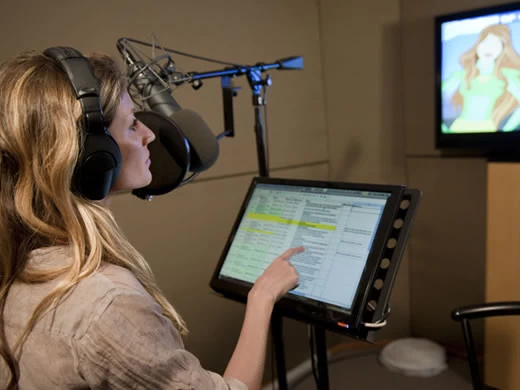Subtitling is the process of adding text to any media, in order to convey the message. The subtitles are, mainly, an adaptation of the audio. They enable people to understand what is being said, even if they don´t speak the language. It wouldn´t be possible to understand the nuances of verbal communications without subtitles.

Types of Subtitling
The interlinguistic language is used, mainly, for those with hearing impairment. There are several subcategories in this area and the principal are:
Closed Caption
cc
The type of interlinguistic subtitling used mainly in the television industry and, more recently, in streaming websites, such as YouTube and Netflix. The term “Closed” refers to the fact that they are not immediately available when the video or program starts. It is necessary to select this option and activate it to read the subtitles. This type of subtitling is seen as a transcription as accurate as possible of what is being said and, also, includes descriptions of non-visual elements, such as a description of a song or references to doorbells or footsteps of people who do not appear on the screen.
In Real Time
Real-Time Subtitling
It is a type of subtitling that doesn’t have much representation in Portugal, but in countries like the United States and the United Kingdom is being more and more used, since in those countries the law requires that practically every television program must be accessible for the population with hearing impairment. However, this type of subtitling has not been very popular, due to the time it takes to perform the transcription, encode it and put it back on the screen, subtitles appear a few seconds late in relation to the audio and usually have several errors.
Same Language Subtitling
SLS
It is a type of subtitling used primarily at an educational level to help students develop their reading skills with the help of visual media. It has a higher technical and quality level than other types of subtitling, so as not to mislead students.
In the case of the extralinguistic subtitling, the best known and used in Portugal, it is possible to find two subcategories:
In Real Time
A rare type of subtitling, in which an interpreter and a stenographer work together. The interpreter quickly translates what is being said and the stenographer writes the translation and transmits it in real time. As in the case of interlingual subtitling, this method is prone to errors and low quality.
Offline
Most known type of subtitling. The program/film/video is available to the subtitling professional who is responsible for adding the subtitles to it, within a certain period of time. In many cases, the subtitling professional is also responsible for time synchronization, that is, for matching what is being said to the subtitles. However, with the appearance of new types of software, it is increasingly common to have a professional solely responsible for creating a template where the subtitles are already synchronized and another for the translation and quality control to their language.
Why do some countries opt for dubbing?


Dubbing continues to be the preferred method in these four countries, but subtitling has been growing slowly, mainly to save on costs and time, but also because the younger generations, who have a higher education level and are exposed to the English language through the Internet, films and series, prefer to listen to the dialogues in the original language.